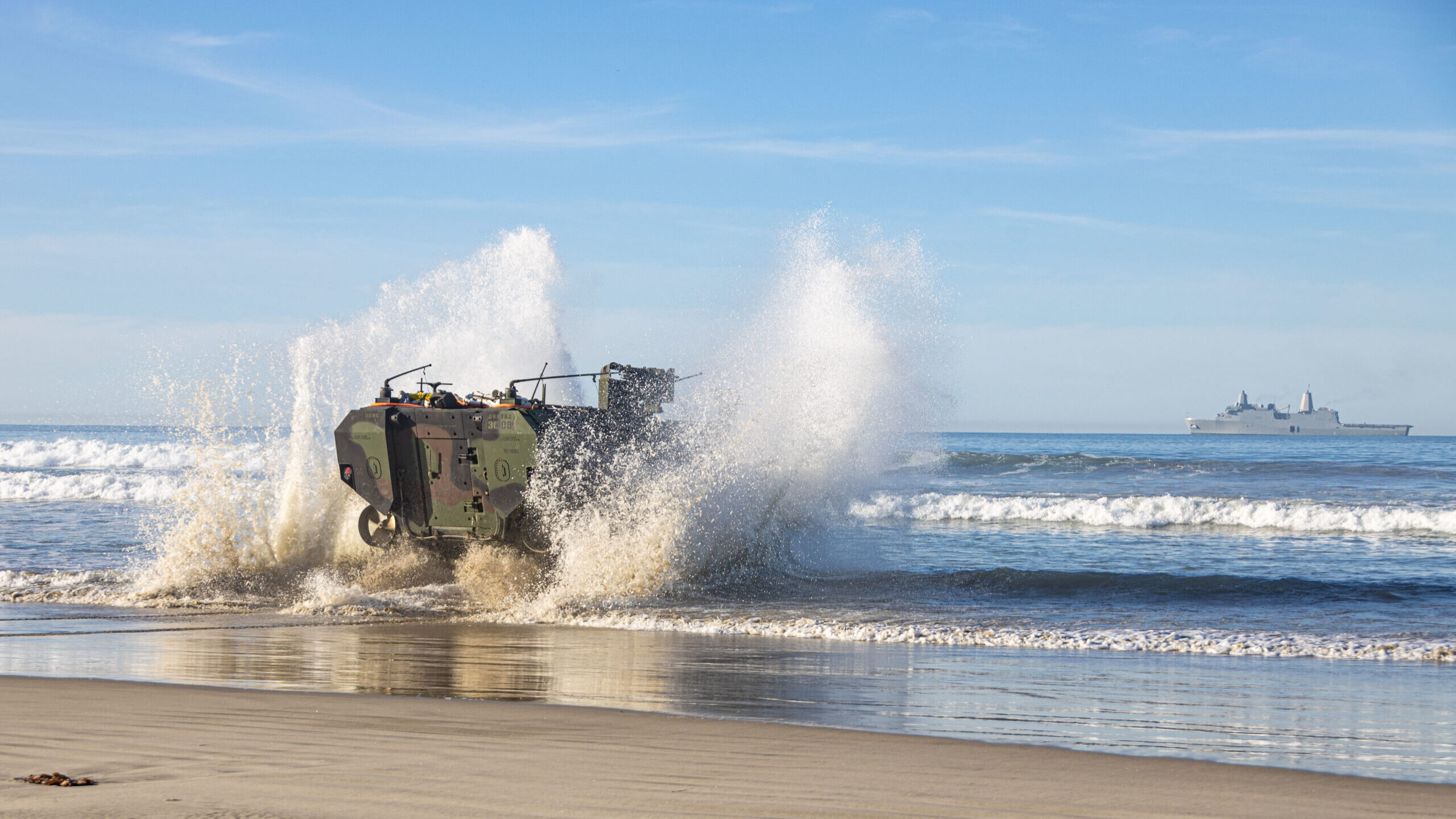
U.S. Marines conduct waterborne training with an Amphibious Combat Vehicle (ACV) from shore to loading amphibious transport dock ship USS Anchorage (LPD 23) at Marine Corps Base Camp Pendleton, California, Feb. 12, 2022. (U.S. Marine Corps photo by Lance Cpl. Willow Marshall)
WEST 2023 — As the Marine Corps’ Amphibious Combat Vehicle nears its first deployment in the Indo-Pacific, the three-star general overseeing its development says he “look[s] forward” to the scrutiny it may receive from lawmakers following several starts and stops in waterborne operational training.
“We had some issues with getting through the surf zone,” Lt. Gen. Karsten Heckl, the service’s top requirements officer, said Tuesday on the sidelines of the West 2023 conference here in San Diego.
Part of smoothing the way, Heckl said, will be the Marine Corps Warfighting Lab’s use of autonomous undersea vehicle technologies to help Marines more objectively evaluate the surf conditions ahead of ACV transits.
“It’s not expensive. It’s an industry standard. It’s completely expeditionary. You can do it either from the shore to the ship or the ship to the shore,” he said.
FULL COVERAGE: Breaking Defense reports from West 2023
The Amphibious Combat Vehicle, also dubbed ACV, will “soon” deploy to the Indo-Pacific, the Marine Corps’ second most senior officer, Gen. Eric Smith, told conference attendees on Tuesday morning. Heckl added that the vehicle will deploy with a West Coast-based Marine Expeditionary Unit. The upcoming deployment follows the news last summer that the service canceled its previously planned first ACV deployment over issues that arose during training, USNI News reported.
As its name implies, the vehicle, built by BAE Systems, is required to safely transport Marines from water to land and back again when necessary. That transition has caused the service numerous issues over the past two years, and it has repeatedly stopped and restarted waterborne operations for the ACV and the Amphibious Assault Vehicle, the ACV’s predecessor.
That rocky cycle began in 2020 when an AAV sank, killing eight Marines and a sailor. A command investigation report found poor training and maintenance practices led the crew onboard to miss a problem in the vehicle’s transmission.
Heckl on Tuesday said the Marine Corps’ past methods for doing “surf observations” — the practice of checking the ocean’s coastal conditions to determine whether it’d be safe to transit a vehicle such as an ACV — were less than precise.
“In the days when we grew up, you threw a Gatorade bottle out in the ocean and watched what it did — and that’s what you used [to figure out] are we within limits? This [technology] is completely not that,” he said.
The new technology is meant to bring a level of objectivity and precision to the decision.
“If it’s green, Marine knows I go. If it’s yellow, Marine [has] got to make some decisions. [They’re going to] have to use his or her judgment. If it’s red, we’ve got to find a workaround,” he continued.
The three-star general also said he suspects some of the issues have likely come down to human error rather than the technology itself.
“I’m an aviator. Ninety-nine percent of all aviation mishaps is pilot error,” Heckl said. He added that while he wouldn’t “get ahead” of the ongoing investigations into the training incidents, human error is “certainly going to be a component” of the issues.






















